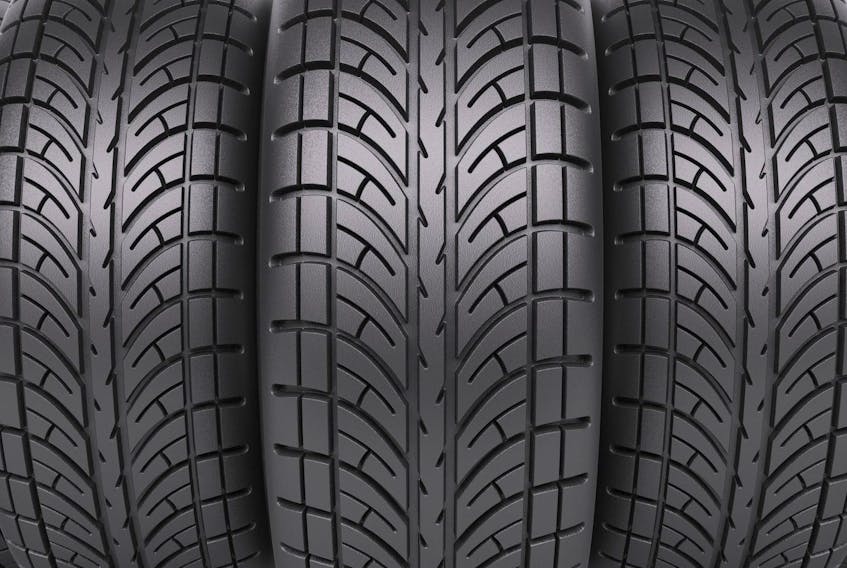No, they are not trying to rip you off.
I’ve heard it too many times to ignore. “You don’t need four winter tires. Dealers are just trying to rip me off,” or something to that effect.
Most of these gripes come from older folks who grew up with rear-drive cars, and a set of “snows” on the rear wheels.
Those same old cars had carburetors and miserable fuel mileage. The exhaust systems had to be replaced every year or two and “tune ups” were an annual ritual.
They were death traps in a crash and rusted while you watched. Time and technology have moved along. Today’s tires are a perfect example. That rock-hard old bias ply “snow” tire has been replaced by sophisticated radial winter tires, engineered to cope with a wide variety of cold conditions.
These new-age winter wraps allow modern vehicles to be much safer, taking advantage of computer-controlled traction and stability control systems.
These new winter tires are at their best when installed in sets of four — providing a balance of traction. If there are only two, they should be installed on the rear wheels whether the vehicle is front-, rear- or all-wheel drive.
I received my first real-world lesson in this back in the ’80s. I had just purchased one of the first front-drive small cars on the market.
I bought a pair of heavily-studded Pirelli snow tires and put them on the front wheels, ready for action.
I went off the road backwards at the very first turn on slippery conditions.
Many subsequent test sessions and winter driving schools in North America and Europe have driven home the point of balance — of what the respective tires are doing.
Without launching into a technical paper here, suffice it to say the front wheels of any vehicle have their work cut out for them doing the steering.
Ask them to also deliver traction for accelerating or do most of the braking and you are adding to their work load.
The total grip is a finite number. If they are at or near that number in a turn and you add some power or brake pressure, weight shifts from the rear unto those front tires.
The resultant total load is likely to exceed the available limit, and a loss of traction occurs. Reducing the combination of loads is the only way to regain traction — reduced steering, throttle and/or brake pressure.
So much for the front wheels. What about the rears? Why do we now need better grip there, summer or winter?
After all, they are merely trailing along, keeping the rear bumper off the ground, right?
They are doing all that — as they always have. But modern computer-controlled anti-lock brakes, stability and traction control systems have given the rear wheels a new lease on life.
They now play a greater role in cornering, and braking. The problem is, they have a much smaller footprint than the front tires when slowing or turning because of the weight shift mentioned above.
Less contact with the road means they need all the help they can get — as good as, or better than the tires up front.
The purchase of quality tires is the one single way you can actually increase the safety of your vehicle. Replace original equipment tires with better ones and don’t skimp on winter rubber.









